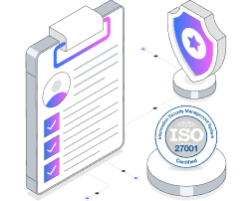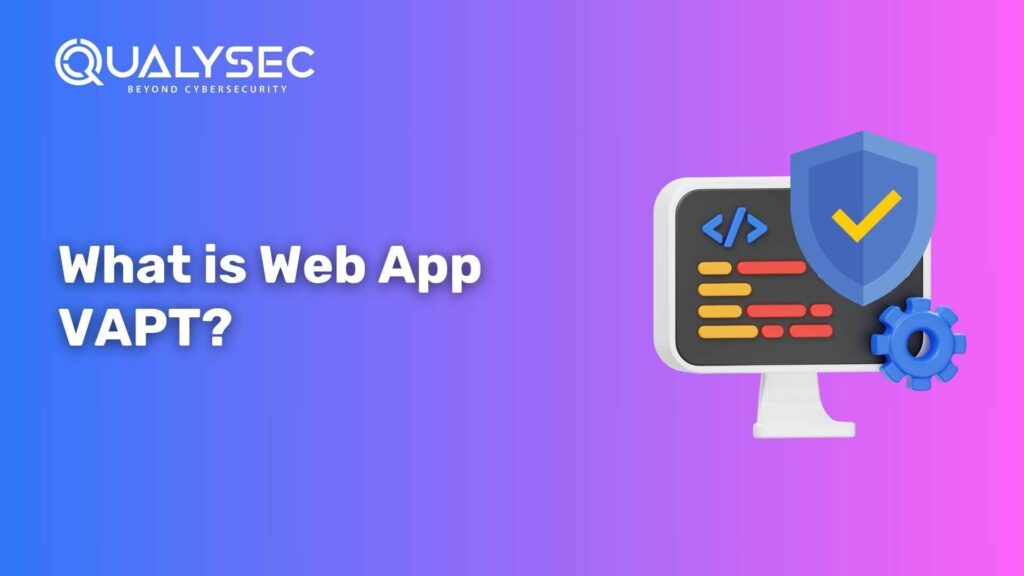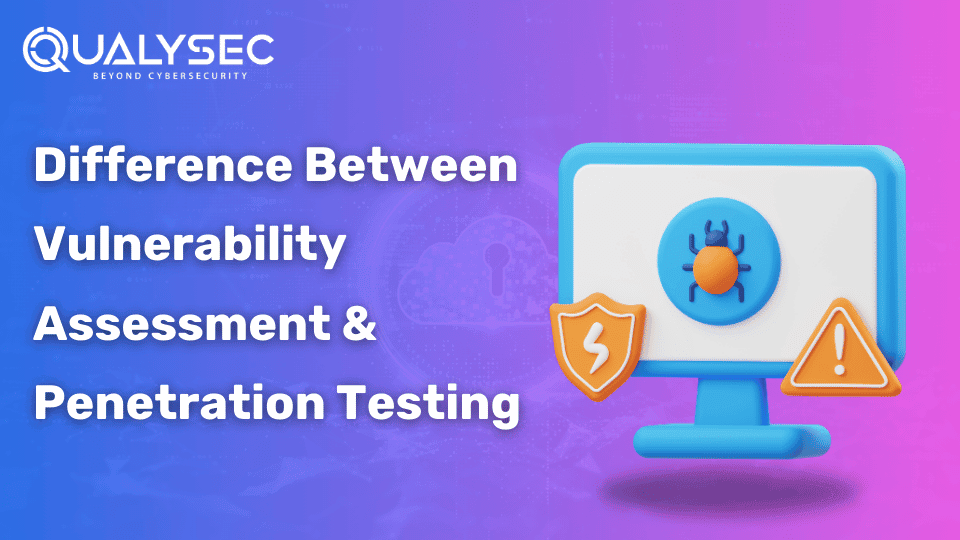What is Web App VAPT?
As the number of cyber threats reaches its peak, web application security has risen to the top of businesses’ lists across the world. This is to keep the web application shielded from attacks that can both harm data sensitivity and break down a particular operation, as well as destroy the reputation of the organization. Web Application Vulnerability Assessment and Penetration Testing (Web App VAPT) are one of the most effective methods to secure web applications. The security testing approach outlined above, therefore, aids the identification of vulnerabilities, their assessment of impact, and the mitigation of associated risks before the malicious actors can cause any harm. Qualysec Technologies is here to tell you today what Web App VAPT is and why it is important, the process involved, methodologies, common vulnerabilities, and how a business can leverage web app VAPT services by Qualysec Technologies. What is a Web App VAPT? As a security testing methodology, Web App VAPT combines VA and PT for identifying, analyzing and remediating the security flaws of web applications. It allows organisations to tackle security loopholes that can be exploited by cybercriminals before they are acted upon. When both have been applied, Web App VAPT combines the risks and brings out the security measures that make organizations secure. Why is Web App VAPT So Important? Because web applications are a necessary part of business operations, software security threats are on the rise. Hackers are looking for ways to exploit vulnerabilities to steal data, finances, and destroy a brand’s reputation. At this point, Web App VAPT becomes necessary. It assists organizations in detecting the security weaknesses and the associated risks and mitigating these risks before these risks turn into opportunities for malicious actors. Protection Against Cyber Threats One of the primary reasons hackers tend to target web applications is that they handle such sensitive data (customer information, financial records, intellectual property, etc.), making them a prime target. Cyber threats like SQL Injection, Cross-Site Scripting (XSS), Remote Code Execution, and Session Hijacking can cause severe consequences for organizations. Web App VAPT proactively detects and secures these threats before attackers exploit them, reducing the risk of a cyberattack. Ensuring Compliance with Security Regulations Many industries must comply with regulatory security standards like GDPR, ISO 27001, and PCI DSS to protect user data. Failing to comply with these will lead to huge fines, legal troubles and damage to the company’s credibility. Web App VAPT helps organizations to conduct these security requirements, which identify vulnerability and resolve it for global securities laws compliance. Preventing Financial and Data Loss A security breach can cost a business a tremendous amount of money as well as the loss of customer trust and the inability to serve customers. Even as damages from cyberattacks, such as ransomware and phishing, grow in the millions of dollars. They are not limited to the money lost from data thieves – most involve legal battles and regulatory fines as well. Web App VAPT helps mitigate these risks by finding the weak points in the web application and by ensuring measures are in place preventing access by unauthorized individuals. Building Customer Trust and Brand Reputation Users should expect their data to be safe when interacting with a business on the web. A company’s reputation can get severely damaged, and customers’ trust can be severely eroded by a single security breach. The focus of businesses that conduct Web App VAPT is in showing their dedication to data protection. This improves the trust of customers, which in turn enhances the businesses’ ability to retain users and attract new ones. Proactive Security Approach for Business Continuity Instead of reacting by waiting for an attack to occur, it’s better to work through their existing web application security and assess it regularly. Web App VAPT allows checking if a web application is vulnerable to potential threats before they can turn into major security threats that will badly affect business continuity and operations. It’s far easier and less expensive to prevent an occurrence of a security incident than to mitigate a cyberattack. “Related Content: Read our guide to Web app penetration testing!“ Web App VAPT Process Web App VAPT is a crucial cybersecurity practice that businesses use to identify and eliminate security vulnerabilities in web applications. It entails identifying any risks and carrying out cyberattacks, simulations, and remediation strategies. Below is a breakdown of the Web App VAPT process in a step-by-step manner. 1. Planning and Reconnaissance Before performing any security testing, the scope and objectives of the assessment should be defined. This phase involves: The process of planning properly will make sure the testing process is thorough and in line with the business security goal. 2. Vulnerability Assessment Scanning the web application for known vulnerabilities is this phase. It includes: In this phase, testers are left with an initial report listing all vulnerabilities found. “Explore more about web app scanning here!“ 3. Penetration Testing This stage plays the role of replicating the actual cyberattacks in the real world to assess their exploitability and impact on the identified vulnerabilities. It involves: Penetration testing helps assess how realistic the risks of each vulnerability are as they become exposed. 4. Risk Analysis and Reporting Once the assessment and penetration testing phase is finished, security experts analyze the findings and then review them to compile the VAPT report in detail. This report includes: For businesses to prioritize security fixes in the best possible way, they need a well-structured report. 5. Remediation and Re-Testing On receiving the VAPT report, the developers fix the vulnerabilities suggested in the report. This phase includes: In other words, re-testing is needed to verify that the application is now secured and resilient against possible attacks. Latest Penetration Testing Report Download VAPT – Common Web Application Vulnerabilities Identified Since web applications handle so much valuable data, these are primary targets for cyber criminals. Web Application Vulnerability Assessment and Penetration Testing (VAPT) is the process of assessing and finding the potential vulnerabilities in web applications and then





